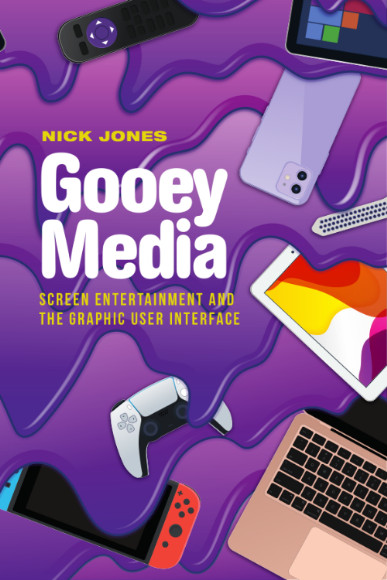
by Nick Jones
Screens are sticky. When we look at our phone, open our laptop, boot up our PC, turn on our games console, or sit in front of the television, we often get glued to the content, and end up scrolling, playing, and watching for hours at a time. The adhesiveness of screen media is partly thanks to the multipurposeness of these screens: we can watch, upload, play, chat, binge, and more all on the same device; we can switch between these functions easily; and we often undertake many of them within the bounds of a single programme window.
Digital convergence has been discussed by many scholars in terms of transmedia properties (those worlds whose plots unravel simultaneously across films, television programmes, books, and games), and the storytelling challenges and possibilities here. But technological convergence – the coming together of multiple media and functions within a single screen and device – has profound implications for screen entertainment beyond narrative. It changes the aesthetics of all these media, making them look and sound a bit like one another. And in turn, it changes the way we as viewers/players/editors/navigators engage with these media, and what we expect from them.
Gooey Media, my new book with Edinburgh University Press, delves into these changes. In it, I explore the media landscape in a media agnostic way – that is, no single media form (cinema, videogames, apps) takes precedence, and instead all are placed on equal footing. After all, this is how they are presented to us on our devices: there is little difference in the presentation of a film playing on Netflix in a browser window, a videogame playing on Steam, or a clip of a television programme watched on YouTube.
This is an important way for scholars and audiences to think about the media landscape. Sure, I would say that (I have a book to sell after all) and it’s certainly true that different forms of media still have significant differences in their production pipelines, industrial frameworks, and audience reception. But this gooey media agnosticism is a way of getting beyond some superficial terms of praise and complaint. When we moan that a film looks like a videogame, or applaud a television show for being cinematic, we’re expressing unthought cultural distinctions and hierarchies, but we’re also identifying the way the various parts of our media ecology stylistically cross-pollinate in the twenty-first century.
Moreover, and I think really importantly, this pollination adopts attributes of navigation and interactivity native to the computer screen. Yes, films, videogames, television programmes, and apps all to some extent converge on our screens, but they also begin to look, sound, and feel a bit like these computer screens themselves. They might as well, since these texts have been written, pre-visualised, rendered, edited, and watched all through this screen.
As I researched the book, these overlaps became more and more apparent. Videogames and films which pretend to be computer interfaces; action scenes which freeze and rotate like browser shortcut keys; television programme title sequences which look like digital architecture exhibits; immersive virtual reality which uses the syntax of videogame interactivity; even city streets which seem just as at home on our screens as they do beneath our feet. And this is not just about visual connections, either, as the soundscapes of media increasingly adopt the pings and pops that aid computer navigation on our crowded desktops.
If all of this happens on our screens, then that is to say more specifically that it happens on our Graphic User Interfaces. This interface is the standard method by which we engage with many of our devices, and if the acronym spells out “gooey”, then of course I think this is absurdly appropriate. These texts and media are all stuck together in a mucilaginous web, a viscous and runny fusion of screen media entertainment. The GUI is the centre of this web, the glue sticking it all together.
As a result, the work of Gooey Media is a bit like trying to nail jelly to a wall. But I’ve tried to keep things fluid, giving the reader less of a map than a series of possible beakers into which all this goo can be poured. Whether all this works will be up to those readers who choose to get stuck in.

About the book
Get 30% off your copy with discount code NEW30
Gooey Media by Nick Jones argues for a critical reading of screen media which centres the GUI in the production and reception of this media
About the author
Nick Jones is Senior Lecturer in Film, Television and Digital Media at the University of York, UK. He has written widely about contemporary cinema, technology, and space, including earlier books on Hollywood action sequences and 3D cinema.





